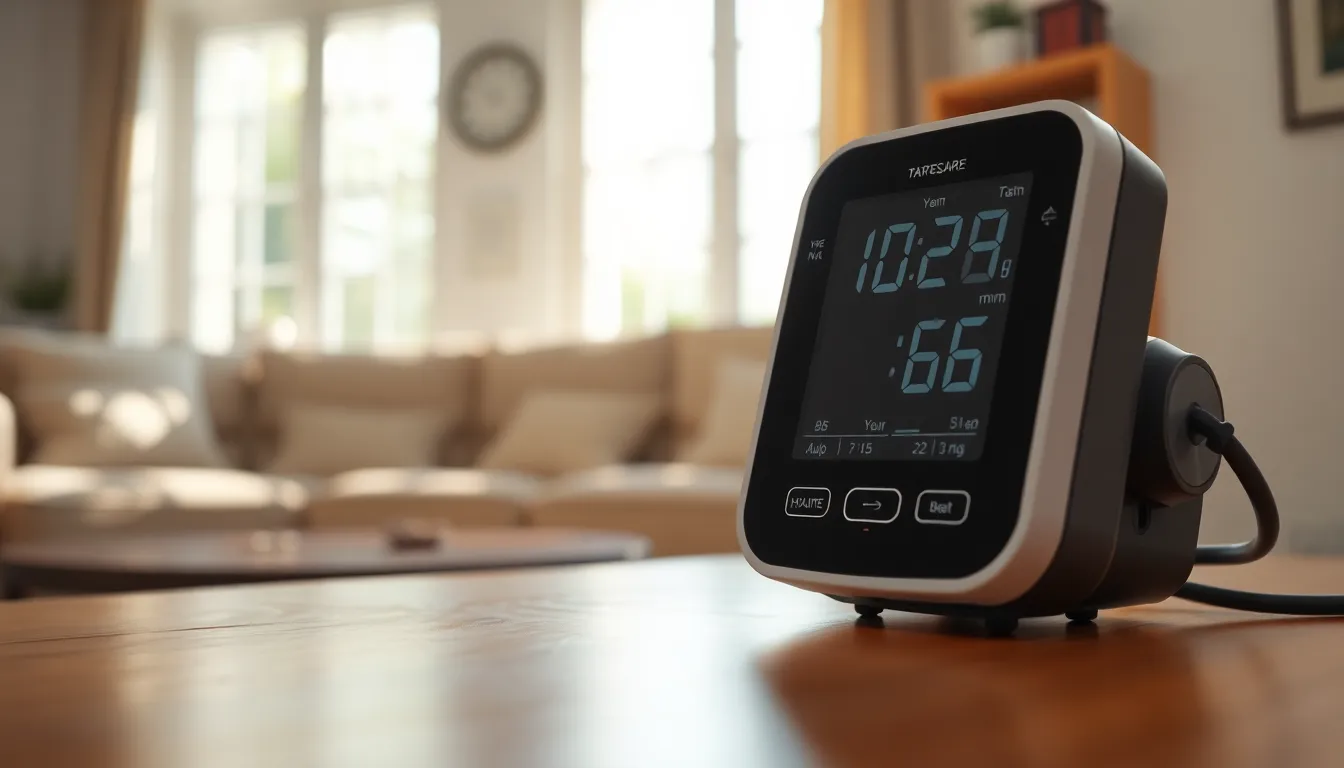When it comes to blood pressure readings, 102/66 might sound like the most chill number on the block. It’s like that friend who shows up to the party with a calming aura and a refreshing drink in hand. But what does it really mean for health? Is it a sign of superhero-like vitality or just a ticket to the land of low-energy vibes?
Understanding blood pressure isn’t just for medical professionals; it’s for everyone who wants to keep their heart in tip-top shape. A reading like 102/66 can raise eyebrows, but it often leads to more questions than answers. Is it too low? Just right? Or is it the body’s way of saying, “I’m cool, don’t worry”? Dive in to discover why this seemingly simple number can have a big impact on overall wellness and how it fits into the grand scheme of health.
Table of Contents
ToggleUnderstanding Blood Pressure Readings
Blood pressure readings reflect vital information regarding cardiovascular health. A reading of 102/66 indicates the force of blood against artery walls during heartbeats and between beats.
What Is Blood Pressure?
Blood pressure represents the force blood exerts on vessel walls. This force consists of two measurements: the systolic pressure, the first number, measures pressure during heartbeats, while the diastolic pressure, the second number, measures pressure between beats. Normal blood pressure typically ranges from 90/60 to 120/80 mmHg. Numbers outside this range can signify varying health conditions. A reading of 102/66 sits within the normal range, suggesting healthy cardiovascular function.
Importance of Blood Pressure Monitoring
Monitoring blood pressure plays a critical role in maintaining overall health. Regular checks help identify potential health issues early. Elevated or decreased readings can indicate risks such as hypertension or hypotension. These conditions often lead to serious complications if left unchecked. Monitoring allows individuals to make informed lifestyle choices or seek medical advice. Consistency in measurements ensures better management of health and promotes longevity.
Decoding 102/66 Blood Pressure

Understanding a blood pressure reading of 102/66 provides insight into cardiovascular health. This measurement indicates the force of blood against artery walls during and between heartbeats.
What Does 102/66 Represent?
This reading consists of two parts: the systolic and diastolic pressures. A systolic pressure of 102 mmHg occurs when the heart beats. The diastolic pressure of 66 mmHg represents the state between beats, when the heart rests. Both numbers fall within the normal range of 90/60 to 120/80 mmHg. Thus, it suggests healthy vascular function. A reading like this often indicates that the cardiovascular system is functioning properly without excessive strain.
Normal vs. Abnormal Readings
Normal blood pressure readings range between 90/60 and 120/80 mmHg. Readings above this range may indicate hypertension, while those below can signal potential hypotension. Readings below 90/60 mmHg often raise concerns about inadequate blood flow to organs. In contrast, hypertension (reading above 130/80 mmHg) poses risks like heart disease and stroke. Recognizing these distinctions aids in self-monitoring and informing healthcare decisions. Regular check-ups help ensure blood pressure remains within a healthy range.
Causes of Low Blood Pressure
Several factors contribute to a blood pressure reading of 102/66. Low blood pressure can result from dehydration, blood loss, or medication side effects.
Common Factors for 102/66 Blood Pressure
Dehydration often leads to a drop in blood pressure as the body lacks sufficient fluids. Blood loss from injuries or internal bleeding also reduces blood volume, impacting readings. Certain medications, including diuretics and beta-blockers, may cause lower blood pressure as a side effect. Hormonal changes, such as those during pregnancy, can also decrease blood pressure. Nutritional deficiencies, especially in vitamins and minerals, may further contribute to hypotension, resulting in readings like 102/66.
When to Be Concerned
Monitoring blood pressure regularly is essential for identifying concerning changes. A reading of 102/66 may be perfectly normal for some individuals. However, symptoms such as dizziness, fainting, or fatigue indicate a need for medical evaluation. It’s crucial to consult a healthcare professional if these symptoms persist. Concerns can escalate if blood pressure drops significantly below normal ranges, signaling potential underlying health issues. Prompt attention can ensure that any necessary interventions occur early in the process.
Managing Blood Pressure Levels
Managing blood pressure levels involves adopting healthy lifestyle choices and understanding when medical intervention may be necessary. Various factors influence blood pressure, making awareness essential for optimal health.
Lifestyle Changes for Healthy Blood Pressure
Adopting a balanced diet promotes healthy blood pressure. An emphasis on fruits, vegetables, whole grains, and lean proteins helps maintain stability. Regular physical activity, such as 150 minutes of moderate exercise weekly, strengthens the heart. Maintaining a healthy weight and minimizing sodium intake further contributes to better readings. Stress management techniques, including mindfulness and yoga, support overall cardiovascular health. Staying hydrated enhances blood flow, which may also assist in regulation. Each of these changes significantly impacts blood pressure levels, promoting well-being.
Medical Interventions and Treatments
Medical interventions may be necessary when lifestyle changes alone aren’t sufficient. Healthcare professionals often recommend medications for managing elevated or low blood pressure. Common classes of antihypertensive drugs include diuretics, ACE inhibitors, and calcium channel blockers. Frequent monitoring of blood pressure levels helps determine the effectiveness of prescribed treatments. If symptoms like dizziness occur, immediate evaluation ensures safety. Collaboration with healthcare professionals ensures appropriate management of any underlying issues. Regular check-ups can also help tailor treatment plans for optimal health outcomes.
A blood pressure reading of 102/66 can be a reassuring indicator of cardiovascular health for many individuals. Understanding this reading is crucial for anyone looking to maintain their overall wellness. Regular monitoring allows for early detection of potential issues and supports informed health decisions.
Lifestyle choices play a significant role in managing blood pressure effectively. A balanced diet regular exercise and stress management techniques can contribute to sustained healthy readings. When necessary medical intervention can further support optimal health outcomes.
Staying proactive about blood pressure can lead to a healthier life and greater longevity.

